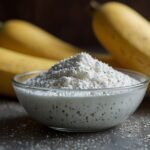Your body’s defense system is designed to protect you, but sometimes it works overtime. When this happens, chronic inflammation can quietly harm your tissues and organs. Unlike short-term swelling from a sprained ankle, this type of internal imbalance often goes unnoticed—until it contributes to serious issues like heart disease or diabetes.
The good news? Everyday choices hold power. What you eat, how you move, and even how you manage stress all influence your body’s response. Small, consistent changes can help you feel better now while safeguarding your long-term health.
This article shares six practical steps to support your well-being naturally. You’ll learn how simple swaps in your diet, movement habits, and daily routines can create lasting improvements. Let’s explore how to work with your body—not against it—to thrive.
Key Takeaways
- Chronic inflammation often lacks obvious symptoms but can lead to major health risks over time.
- Lifestyle factors like diet, exercise, and stress play key roles in managing inflammation.
- Proactive choices today may help prevent conditions like heart disease and diabetes.
- Simple, sustainable changes often yield the most significant results.
- Understanding root causes empowers better long-term decisions for your body.
Understanding Inflammation and Its Impact
Inflammation is like a fire alarm: crucial in emergencies but problematic if it never stops. This natural process helps your body respond to threats like cuts or colds. But when it lingers silently, it becomes a stealthy troublemaker.
What Is Inflammation?
Your immune system activates inflammation to protect against harm. Think redness around a scratch or fever during an infection—these are signs of acute healing. This short-term response fights illness and repairs tissues after injury.
Problems arise when this defense doesn’t switch off. Chronic inflammation lacks obvious symptoms but gradually damages cells. Doctors often measure hs-CRP levels in blood tests to track this hidden issue.
Health Risks Linked to Chronic Inflammation
When inflammation becomes a long-term guest, it stresses organs and arteries. Research links it to heart disease, as persistent swelling can create fatty deposits in blood vessels. These blockages raise the risk of heart attacks.
Other conditions like diabetes and certain cancers also connect to ongoing inflammation. Even mild fatigue or joint stiffness might signal internal imbalance. Addressing these triggers early helps protect your long-term health.
Developing an Anti-Inflammatory Diet and Lifestyle
What you put on your plate shapes your body’s inner environment. Think of food as tools: some spark repair, while others add wear and tear. Choosing wisely can help balance your system naturally.
Power Up With Nutrient-Rich Choices
Fatty fish like salmon deliver omega-3s—natural compounds that calm cellular stress. Pair them with leafy greens, berries, and nuts for a vitamin-packed punch. Aim for a rainbow of fruits and vegetables—deep oranges, purples, and greens mean diverse antioxidants.
Ditch the Trouble Makers
Processed snacks and sugary drinks often hide trans fats or refined sweeteners. These ingredients can trigger internal irritation. Swap white bread for whole-grain options, and choose olive oil over butter when sautéing veggies.
Cook Smarter, Not Harder
Steam broccoli instead of frying it to keep its nutrients intact. Bake chicken with herbs rather than charring it on high heat. Gentle methods preserve vitamins and avoid harmful compounds from burnt oils.
Consider the Mediterranean diet as a blueprint—it emphasizes fresh produce, lean proteins, and healthy fats. Next time you shop, check labels for phrases like “partially hydrogenated oils” and put them back. Small swaps today build a stronger tomorrow.
Effective Strategies for reducing inflammation
Movement and calm might seem like opposites, but together they form a powerful duo. Regular activity and mindful pauses work synergistically to help your systems function optimally. Let’s explore practical ways to integrate both into your routine.

Building Consistent Exercise Habits
Aim for 30-45 minutes of brisk walking or cycling most days. The American Heart Association notes this rhythm improves blood flow and cellular repair. One study found participants who maintained this routine saw a 12% drop in inflammatory markers over six months.
Don’t overlook strength training. Twice-weekly sessions using resistance bands or bodyweight exercises build muscle that naturally fights cellular stress. Personal trainer Maria Ruiz suggests: “Start with wall push-ups and chair squats if you’re new—consistency matters more than intensity.”
Stress Management Techniques
Chronic tension keeps your body on high alert. Harvard researchers found just 10 minutes of daily meditation lowers cortisol by 18%. Apps like Calm offer guided sessions for beginners—try one during your lunch break.
Yoga combines movement with mindfulness. A 2023 Johns Hopkins review showed regular practitioners had healthier gut bacteria linked to balanced immune responses. Even five minutes of morning sun salutations can set a calmer tone for your day.
Pair these strategies with the dietary tips we discussed earlier. Together, they create a foundation that helps your body maintain equilibrium naturally. Small steps today lead to lasting benefits tomorrow.
Lifestyle Modifications to Combat Chronic Inflammation
Your daily habits act like thermostat settings for your body’s equilibrium. Small adjustments to movement patterns and weight management can create lasting balance where it matters most.
Why Weight Matters
Excess body fat, particularly around the abdomen, releases chemicals that keep your system on high alert. Research shows losing just 5-10% of body weight lowers inflammatory markers by up to 30%. This shift significantly reduces risk factors for conditions linked to prolonged internal stress.
Regular movement does double duty—it helps manage weight while directly calming cellular responses. A 2022 Mayo Clinic study found participants who walked 7,000 steps daily had better blood sugar control and lower obesity-related inflammation than sedentary peers.
Actionable Steps for Lasting Change
- Swap processed snacks with roasted chickpeas or apple slices
- Take three 10-minute walk breaks during work hours
- Choose grilled chicken over red meat twice weekly
Ditch sugary sodas—their sweeteners can spike blood sugar levels, creating cellular friction. Instead, try sparkling water with lemon or herbal teas. Pair these changes with whole grains and colorful veggies for maximum impact.
Remember: Progress beats perfection. Parking farther from store entrances or taking stairs instead of elevators counts. These micro-changes, combined with an anti-inflammatory diet, help your body function at its best while lowering long-term health risks.
Conclusion
Your daily choices act like steering a ship—small adjustments keep you sailing toward calmer waters. By combining the six strategies we’ve explored, you create a ripple effect that supports your body’s natural balance. Whether swapping processed foods for colorful veggies or choosing a brisk walk over screen time, these steps add up.
Focus on what’s sustainable. A Mediterranean diet rich in olive oil, fish, and whole grains isn’t just tasty—it’s a science-backed shield against chronic diseases. Pair it with movement that brings joy, whether gardening or dancing, to sustain momentum.
Remember: This isn’t about perfection. Skipping sugary drinks three days a week or trying a 5-minute meditation still counts. Over time, these habits strengthen your defenses against illness and diabetes while boosting energy.
Your health journey is lifelong, but every positive choice fuels a brighter tomorrow. Start with one change this week—your future self will thank you.
FAQ
How does chronic inflammation affect long-term health?
Prolonged inflammation can damage healthy cells and tissues, increasing the risk of conditions like heart disease, diabetes, and certain cancers. It’s often linked to lifestyle factors such as poor diet or lack of exercise.
What foods should I prioritize to support an anti-inflammatory lifestyle?
Focus on whole, unprocessed options like fatty fish (e.g., salmon), leafy greens, berries, nuts, and olive oil. These contain antioxidants, omega-3s, and polyphenols that help combat harmful processes in the body.
Are there specific cooking methods that preserve nutrients in anti-inflammatory foods?
Steaming, sautéing with olive oil, and roasting at lower temperatures retain more vitamins and antioxidants compared to frying. Avoid charring meats, as this can create compounds that trigger stress responses.
Can sugary drinks like soda worsen inflammation?
Yes. Beverages high in added sugars, such as soda or sweetened teas, spike blood sugar levels and promote oxidative stress. Opt for water, herbal teas, or unsweetened options instead.
How does physical activity influence inflammation markers?
Regular exercise, like brisk walking or cycling, lowers CRP (C-reactive protein) levels—a key indicator of inflammation. Aim for 150 minutes of moderate activity weekly to see benefits.
Does stress really impact inflammation in the body?
Chronic stress elevates cortisol levels, which can disrupt immune function over time. Practices like meditation, yoga, or deep breathing help manage stress and reduce its physical effects.
Why is the Mediterranean diet often recommended for inflammation?
It emphasizes fruits, vegetables, whole grains, and healthy fats like olive oil—all linked to lower CRP levels. Studies show it supports heart health and may reduce risks tied to prolonged inflammation.
Can carrying excess weight contribute to inflammatory responses?
Fat tissue, especially around the abdomen, releases proteins called cytokines that promote inflammation. Losing even 5–10% of body weight can significantly improve metabolic health.



